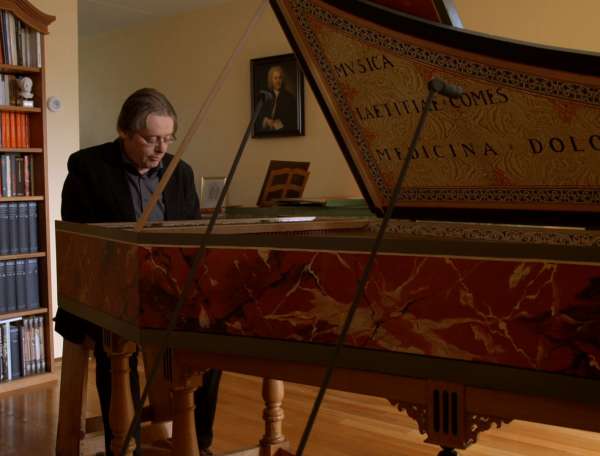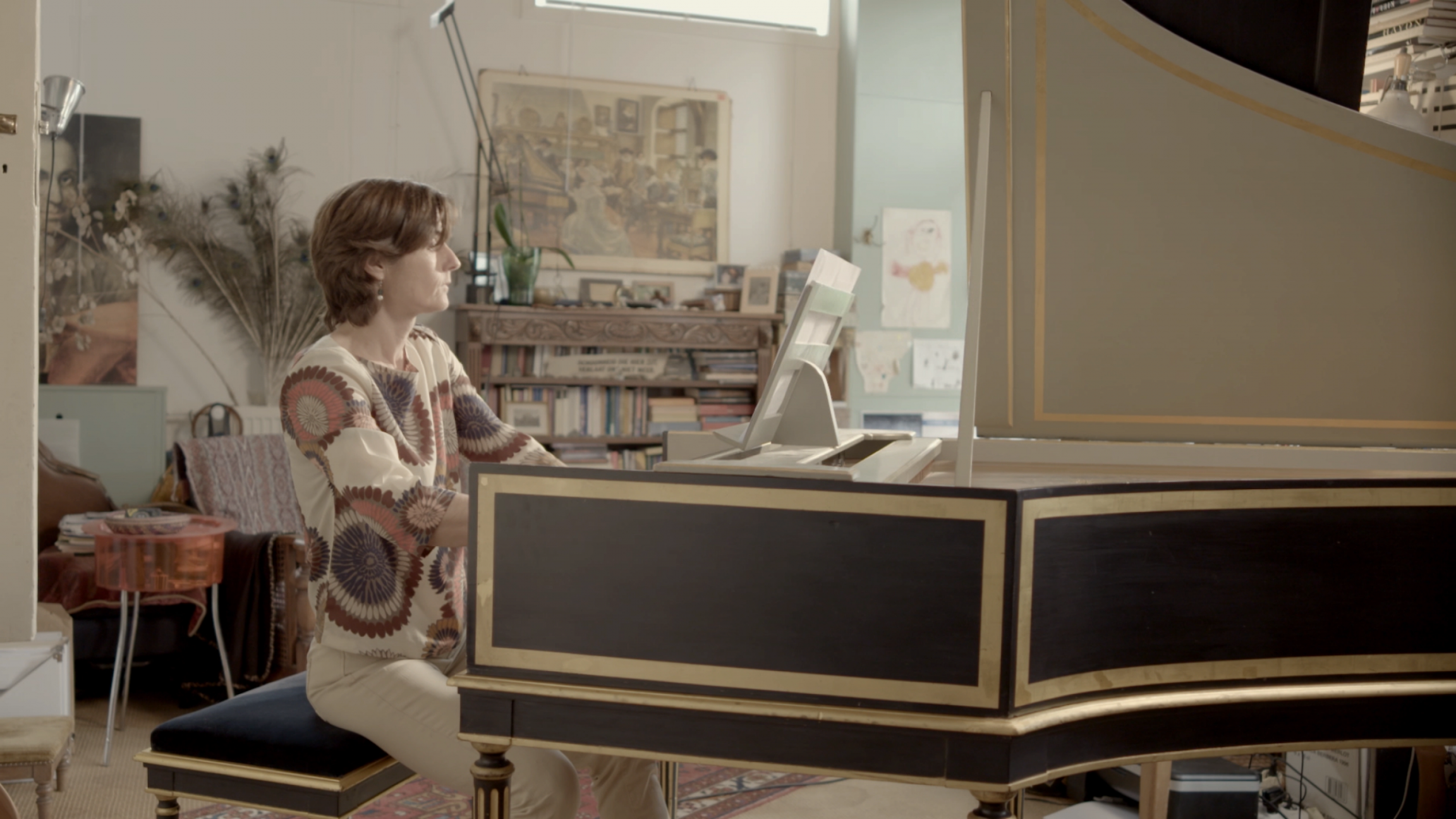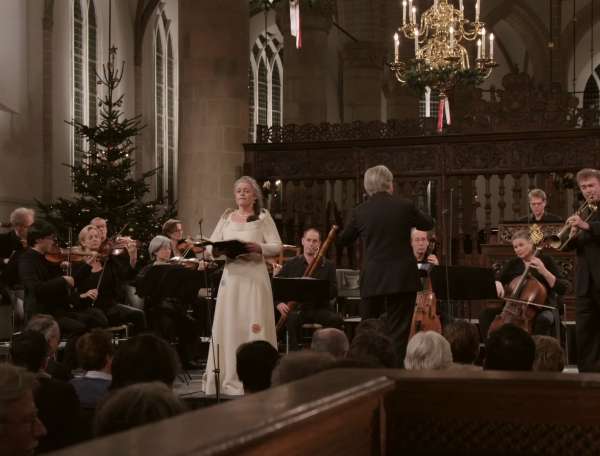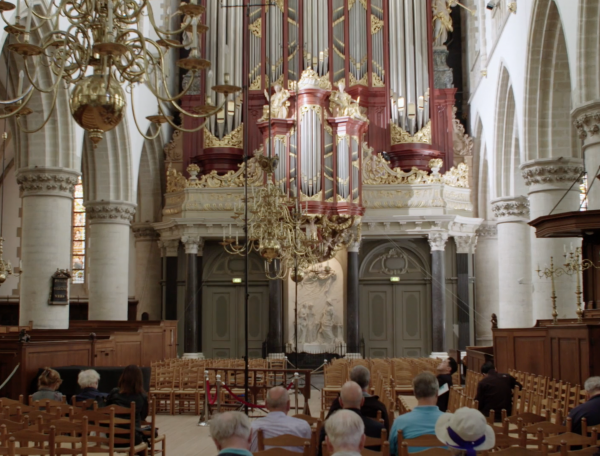

The Well-Tempered Clavier I No. 11 in F major
BWV 856 performed by Ursula Dütschler
at home in Muiden, the Netherlands
Behind the music
Walking through an alpine meadow
Bach did not embark on too many adventures here
In keeping with the unaffected character of the key of F major, Bach kept this prelude and fugue relatively simple. It is a key that is also well suited to Ursula Dütschler, which is why she chose these two short pieces. The prelude is like a light-footed walk through an alpine meadow, says the harpsichordist of Swiss origin, who incidentally has been living in the Netherlands for a long time now. It is an ingenious string of arpeggiations that alternate in a smooth movement. However, there are also spoilsports: the ‘stupid trills’ in both the left and the right hand. It is a huge challenge to play them while the flowing movement continues in the other hand. This gives the work a slight air of a practice piece, in which Bach tests the motor and rhythmic skills of the player.
The prelude makes a very natural transition, in practically the same tempo, to the three-part fugue. The fugue is characterised by the scale passages, which like the arpeggiations in the prelude are strung together seamlessly. But Bach does not do anything crazy here either. The mountain walk seems to continue, hardly verging from the straight path, as it does not proceed further than D minor and G minor. And within the framework of F major, they are not what you would call adventurous modulations.
Das Wohltemperirte Clavier, BWV 846-893
Composing 48 keyboard pieces in all 24 keys was the sort of challenge Bach enjoyed. In each of the two parts of the Wohltemperirte Clavier, he brought together the musical couple prelude and fugue 24 times; twelve in minor keys and twelve in major. In the preludes, he gave free rein to his imagination, and demonstrated mathematical tours de force in the fugues. In contrast to the iron discipline Bach had to apply to his church compositions, here he could abandon himself to intellectual Spielerei without worrying about deadlines.
The first part of the Wohltemperirte Clavier dates from 1722, although it contains some music that was written in the preceding five years. There is less clarity about the history of part two. Bach compiled this second manuscript only around 1740, although once again some of the preludes and fugues it contains date from a much earlier period. Bach described the target group for this collection of pieces as follows: ‘Zum Nutzen und Gebrauch der Lehr-begierigen Musicalischen Jugend, als auch dere in diesem studio schon habil seyenden besonderem ZeitVertreib’ (For both the education of the industrious musical youngster and the enjoyment of those well-versed in this material’).
- BWV
- 856
- Title
- Prelude and fugue in F major
- Epithet
- no. 11 from The Well-Tempered Clavier I
- Instrument
- harpsichord
- Genre
- harpsichord works
- Serie
- Das Wohltemperirte Clavier I
- Year
- 1722 or earlier
- City
- Cöthen (or Weimar?)
With support from
Prins Bernhard Cultuurfonds
Extra videos
Vocal texts
Original
Translation
Credits
-
- Release date
- 28 July 2017
-
- Recording date
- 19 April 2017
-
- Location
- Muiden
-
- Harpsichordist
- Ursula Dütschler
-
- Harpichord
- Bruce Kennedy (1988) after Pascal Taskin (1767)
-
- Director
- Jan Van den Bossche, Hanna Schreuders
-
- Music recording, edit and mix
- Guido Tichelman
-
- Camera and interview
- Gijs Besseling
-
- Producer
- Hanna Schreuders
-
- With support from
- Prins Bernhard Cultuurfonds
Discover
Help us to complete All of Bach
There are still many recordings to be made before the whole of Bach’s oeuvre is online. And we can’t complete the task without the financial support of our patrons. Please help us to complete the musical heritage of Bach, by supporting us with a donation!

